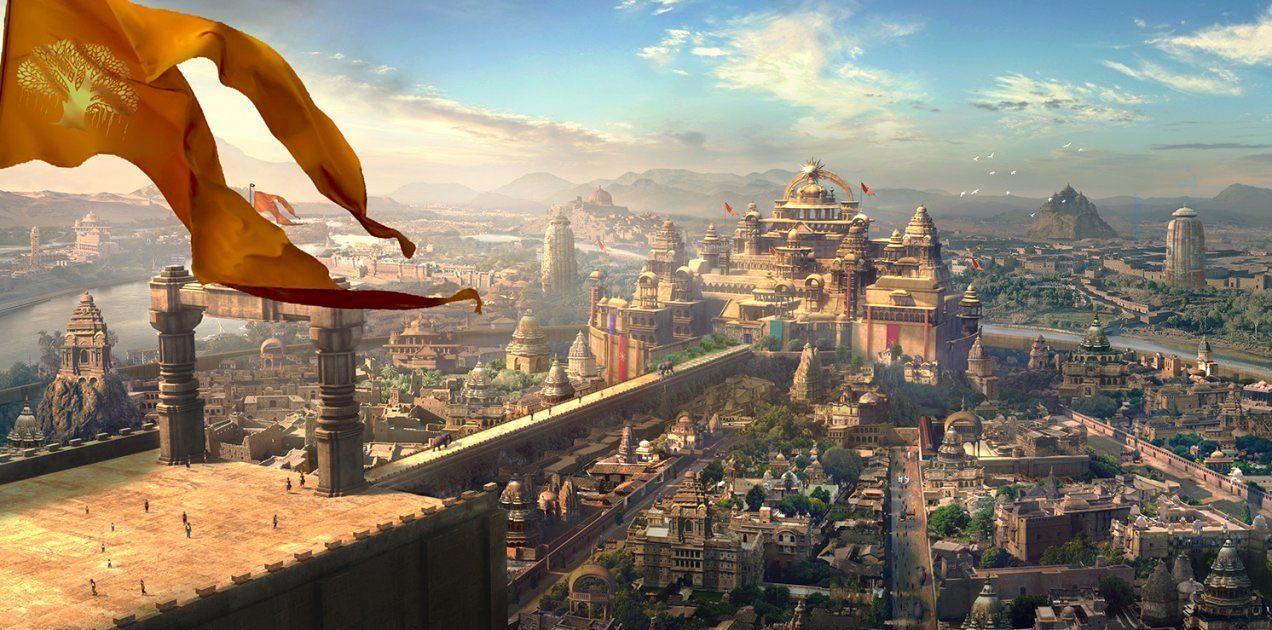
HISTORY OF AYODHYA
Ayodhya, the celestial city bathed in the ethereal glow of divinity, stands as a luminous jewel in the tapestry of Hindu spirituality. Its roots delve deep into the sanctified realms of Treta Yuga, an epoch where the sacred river Sarayu whispered its divine secrets to the sacred land. The ancient scriptures, especially the revered Ramayana, weave a resplendent tale of Ayodhya, casting it as the celestial cradle of Lord Rama, the embodiment of virtue and dharma.
In the divine chronicles of Treta Yuga, Ayodhya emerged as the majestic realm presided over by the virtuous King Dasharatha. The celestial vibes of this city resonated with the hymns of sages and the sweet melodies of celestial beings. Ayodhya’s palaces, adorned with ethereal grace, bore witness to the embodiment of cosmic virtues in the form of Lord Rama, the seventh avatar of Lord Vishnu.
The saga unfurls as Ayodhya rejoices at the birth of Lord Rama, whose divine radiance illuminated the city and its inhabitants. The corridors of Ayodhya’s palaces echoed with the sounds of jubilation as the citizens celebrated the arrival of their beloved prince, destined to etch his name in the annals of divinity.
However, the divine drama of Lord Rama’s life took a poignant turn as he embarked on a journey of selfless sacrifice. The Ramayana, an epic penned by the venerable sage Valmiki, delineates the cosmic dance of dharma as Lord Rama, guided by his unwavering commitment to righteousness, embraced exile with his consort Sita and devoted brother Lakshmana.
Ayodhya, once resonant with joyous melodies, now echoed the silent lament of separation. The palaces, once adorned with opulence, stood as witness to the sacrifice of a prince who relinquished the throne for the sake of dharma. The pious soil of Ayodhya bore the footprints of Lord Rama as he embarked on a journey that would unravel the cosmic tapestry of destiny.
The Ramayana’s verses resonate with the divine love between Lord Rama and Sita, the embodiment of purity and devotion. Ayodhya became a symbol of their eternal connection, the sacred soil sanctified by the footsteps of the divine couple. The city’s landscape echoed the divine melodies of their love, an ode that transcended earthly realms and touched the celestial spheres.
The narrative crescendoed with the epic battle against the demon king Ravana, a cosmic duel that echoed in the spiritual realms. Ayodhya’s destiny, entwined with Lord Rama’s, found its culmination as the triumphant hero returned, with Sita by his side, to the jubilant embrace of his people.
The festival of Diwali, celebrated with unparalleled fervor in Ayodhya, illuminates the city with the radiance of a thousand lamps, symbolizing the triumph of light over darkness, dharma over adharma. The celestial city resonates with devotional fervor as the divine homecoming of Lord Rama is commemorated, invoking blessings and grace upon the devoted denizens.
Recent Developments
In the annals of Ayodhya’s history, the recent chapter involving the disputed site and the construction of the Ram Mandir is a testament to the enduring spiritual significance of this sacred land. The Supreme Court’s verdict, acknowledging the sanctity of the site and the religious sentiments of millions, heralds a new era where Ayodhya’s spiritual tapestry is meticulously woven with threads of harmony and reverence.
As the Ram Mandir emerges on the sacred grounds, Ayodhya’s skyline once again resonates with the divine vibrations of devotion and spirituality. Pilgrims and seekers converge upon this sacred city, drawn by the invisible threads that bind the earthly with the celestial. Ayodhya, the city of Lord Rama, eternally pulsates with the heartbeat of devotion, inviting all to partake in the divine dance of love, sacrifice, and righteousness.
